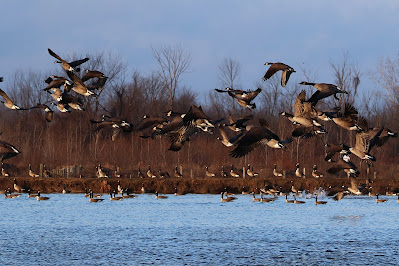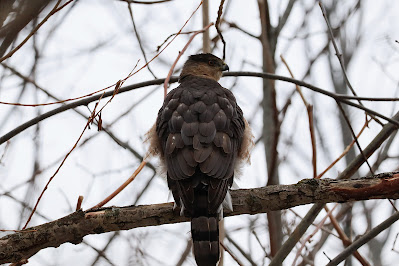2024 Favourites!
As the year comes to a close, I reminisced about my favourite experiences.
The Dukes' Skipper is a very rare and local resident, restricted to extreme south-western Ontario. I had a nature connection with one on a hot July day. A Dukes' decided my sweaty skin was a good source of salt! It also found residue on my binoculars and stayed with me for almost 10 minutes, absolutely making my day!!
Cecropia Moth, June 21st. I was happy to find this one on my own!
A Grapevine Beetle surprised us when looking at the critters in our Moth Trap on July 13th.
During a bird inventory, we stopped to scan with our binoculars and a Grey Treefrog was resting right in front of me!! Another species that I was happy to find on my own!! June 6th.
A small plantation of PawPaw and Common Hoptree was planted locally a few years ago. The Hoptree (which is a species at risk) is a host plant for the Giant Swallowtail. One day I counted 14 caterpillars. I checked on them daily and on August 19th, found a "train" of Giant Swallowtail caterpillars on the branch!
Common Candy-stripe Spider June 13th: This beauty was in our backyard one night as I wandered around with a flashlight. I was waiting for moths to fly towards the UV light and land on the hanging sheet.
Although a little gruesome, I was fascinated by this experience on June 3rd. While watching a live teneral (freshly emerged from the nymph stage) damselfly species, an Eastern Forktail approached, grabbed the prey and severed the wings and abdomen from the rest of the body. It carried the abdomen to another leaf where it discarded the wings and proceeded to eat it. “Eat or be eaten!!”
I found the first Slender Orange-bush Lichen ever recorded in Canada! A Lichenologist came to Sarnia so he could confirm the species which is normally found along the Gulf of Mexico!
And a final cool experience was finding a Virginia Opossum high in a tree cavity on December 30th! It is Canada's only Marsupial! They are a nocturnal species, but during warm winter days, are sometimes active. After this individual had its picture taken, it turned around and went to sleep. Opossums have a wicked hiss and a mouthful of teeth that they will flash when scared, but they're actually sweet-tempered and don't bite unless forced to defend themselves. Apparently they never have rabies.
https://www.welcomewildlife.com/virginia-opossum-a-yards-ideal-visitor/




















































